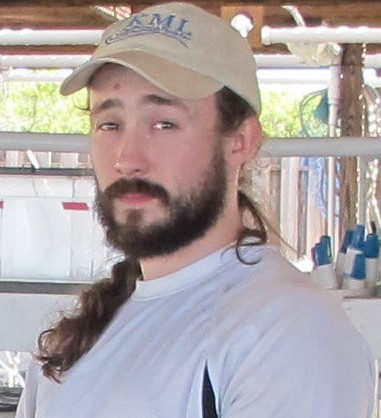
Brandon Russell, Ph.D.
brandon@russellmarineoptics.com
About
My research involves the use of optical and other sensing techniques in a variety of fields including satellite and airborne calibration/validation, bioluminescence, remote sensing, camouflage, benthic mapping, coral reef studies, and the classification of floating vegetative wrack. I'm most interested in leveraging and developing new technologies and sensor fusion methods for biological, ecological, and remote sensing research questions.
Under the mentorship of Professor Heidi Dierssen, I defended my PhD in 2016, the subject of which was the application of hyperspectral imaging to animal camouflage and coral bleaching. I then completed a post-doctoral fellowship on NASA's COral Reef Airborne Laboratory (CORAL) mission, measuring water column optics in support of coral reef mapping in the Pacific. Afterwards I joined the lab of Dr. Mike Twardowski at the Harbor Branch Oceanographic Institute, studying the distribution of bioluminescent organisms and associated water column optical parameters in the mesopelagic zone.
While working at Labsphere, Inc. I served as Lead Remote Sensing Engineer, working at the interface of science and engineering to develop novel instrumentation and equipment in the optical and remote sensing realms for space flight and ground systems. This included a variety of private and public projects for clients including NASA, the US Army, Raytheon, and multiple universities. I was also the Lead Scientist for Labsphere’s Field Line-of-Site Automated Radiance Exposure (FLARE) Network, which provides an automated, on-demand calibration system for remote sensing satellites, airborne, and autonomous platforms in the VISNIR-SWIR range.
Currently, I am Technical Staff at the Massachusetts Institute of Technology Lincoln Laboratory. I am focusing on calibration and support for NOAA’s next generation Geostationary eXtended Observations (GeoXO) mission. GeoXO will represent a massive step forward in operational geostationary Earth observation, and includes sensors for ocean color, atmospheric composition, IR sounding, lightning mapping, and fast-revisit multi-spectral imaging.
The use of optical tools has allowed me to work with a diverse range of marine and remote sensing researchers, and I'm always interested in new collaborations. I've been fortunate to participate in a wide variety of studies including bivalve feeding, light source characterization, nano-particle toxicity, sensor-platform design, seagrass export dynamics and remote sensing, coral reef ecology, autonomous in-water benthic mapping platforms, remote sensing of floating vegetation, arctic bio-optics, and animal camouflage. Recently my focus has been on improving calibration technologies and methodologies for remote sensing, in order to improve the quality of data available to the scientific community.